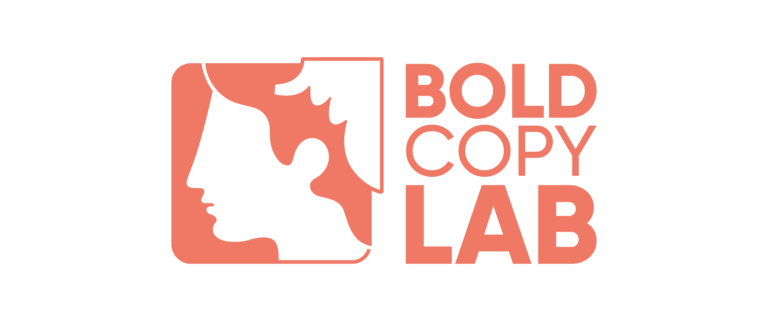Professional product descriptions are an essential foundation for any e-commerce content strategy. But, what are the characteristics of a good product description? Should I write with my customers or search engines in mind? Below, we outline the most crucial types of product copy. We also offer tips on persuading Google and your potential customers with quality product descriptions. So basically you will learn here: How to write SEO-friendly product descriptions.
Quality content is paramount for blogs and news websites to survive in the competitive online industry. Online stores have to do their best to acquire and keep customers if they seek a better ranking in search engine results pages.

Why are product descriptions so important?
In 2011, the first Google algorithm update radically changed the game rules in the online sector, including e-commerce. Since this update, quality content is necessary for a website to increase its ranking in the search engine. The algorithm punished those pages with embellished optimization strategies and unnecessary content, while others benefited. The requirements were crystal clear: no duplicate nor copied content. In other words, unique and quality content was the norm.
The latter gave rise to problems for many e-commerce stores. Many of them had content usually not written by their team but rather the same product descriptions used by the manufacturer. The algorithm identified these texts as duplicate content and decreased the ranking of these websites. Since then, online stores have always been distinguishable from other websites. Whoever invests in writing quality product descriptions will obtain a significant advantage and rank in the first positions of organic search results.
Types of product descriptions
A product description is not necessarily a literal description of the product. There are different methods to present the most vital data about the product to potential and interested customers. Most stores lean towards descriptive texts, that is, towards specifications. Because, for most, the most critical characteristics of a product description are that it is informative and represents the product in as much detail as possible. However, depending on the sector, descriptive texts are often not enough.
The types that exist include:
Informative product description: this detailed format is the classic option within product texts. You may find them in online stores in all sectors. These descriptions intend to discreetly and neutrally inform the customer about all the features and functions of the product.
Appealing product description: the advertising nature of persuasive, attractive, or convincing texts is more pronounced than in purely informative ones. Often the texts are critical and embellished, and the style is more narrative. They usually have a clear language with phrases like “buy it now” or “product X will surprise you”; common in classic TV and radio advertising.
Argumentative descriptions use pragmatic elements to convince users. Thus, instead of embellished phrases, the customer finds every one of the advantages. In some cases, these texts include bullet points for a faster presentation and reading of the facts and arguments.
Narrative product descriptions are one of the many fashionable concepts in the online marketing sector. Here the writer gives a personal touch to the texts to generate emotions in the user when he reads the product description. Instead of asserting with facts, this kind of text attracts the client emotionally. The seller must address the needs and stimulate the imagination of the readers to persuade them to purchase.
What must a good product description include?
Regardless of whether they are narrative or descriptive, these texts share some requirements. They must be unique, complete, and error-free.
Now, what should a good product description include?
The classic conception of a product text begins with a detailed product description (200-300 words). Many stores also use bullet points to list special features and quirks.
Some essential elements are:
- Dimensions, size, and weight
- Technical details
- Additional information such as manuals, guides, or tutorials
- Links to related products or accessories
An important issue is the use of relevant keywords. It is crucial to include keywords in the texts, but always in the right amount. You have to be careful with the excess of this type of optimization technique. Although keyword stuffing was a popular activity a few years ago, today, search engines punish it, and users dislike it.
Top tips for writing a product description
When it comes to product texts, there is a lot of talk about Google and the benefits of writing quality texts to get the best ranking in search results. Never lose sight of the fact that you write texts for the clients. Even when the potential client has reached your website through a search engine, you have not overcome the biggest obstacle of all. You must convince the user and convert him from an interested party to a buyer. Quality photos are also a necessary factor for a purchase decision. Texts that inform, entertain, and persuade are essential for the success of an online store. Here are some tips to help you write product descriptions that sell:
Attract the right audience
Ideally, every entrepreneur should know who his client is. It is paramount to take a look at your buyer personas. To address a qualified, professional, and specific audience, you must use the appropriate jargon. If, on the other hand, your target audience speaks neutrally, we recommend that you concentrate on offering basic information in a simple and understandable language. If necessary, you should take the time to explain technical terms.

Elaborate and emotional descriptions are common in fashion and cosmetic stores. However, if you sell computers or electronic products, your style should be more objective. The idea is to be consistent. Carrying out a briefing or writing plan that defines the tone in which you address readers helps to standardize content production.
The benefits of having stand-out elements
Focus on showing the attributes and, above all, the differential advantage of your products or services. Ask yourself the following questions:
- Why should my customers buy this product?
- What distinguishes it from other products?
- What advantages does my product represent for the daily life of my customers?
- Is my product the specific solution to a particular problem?
If your product offers a unique selling proposition, then you’re one step ahead. Now, don’t overdo it. Many copywriters use too many adjectives to convince their users and highlight their advantages over the competition. Use phrases or words such as “better”, “much faster” or “greater” with caution in product descriptions. The same goes for qualifiers such as pretty, interesting, recommended, beautiful, or superlative adjectives like wonderful, fantastic, or excellent.
Added value instead of superficial phrases
Users want to have a conversation; they want to be inspired and informed. Creativity plays an important role when writing product descriptions. Plenty of e-commerce platforms, especially in the fashion and beauty sectors, use shallow phrases. Stay away from common expressions such as “it attracts all eyes” or “a must-have for summer”. Instead, try to answer why they should have the product and focus on the argument for this answer; because that’s what matters, your added value. If you want to be creative when writing, then create mental images in users. Write captivating and content-rich texts, avoid using empty phrases and furnish your work with relevant and meaningful words.
Don’t generalize
There are other mistakes you should avoid at all costs when writing product descriptions. These include, but are not limited to, fillers, or generalizations. It’s very hard to find products for “all tastes”, “that meet the needs of all” or “are perfect in every situation”. These types of generalizations are incorrect and don’t add any value. It is best to be specific and to emphasize the details. The user seeks personalized treatment. If you describe a product as “ideal for sports fans with stressful jobs” that’s much better than depicting it as a product that “makes any professional happy”.
Stay positive
Never try to directly communicate what a product is not, does not, or cannot do. Of course, it’s good to know that shoes are not too tight and don’t cause unpleasant blisters. Or that a dress fits perfectly and doesn’t distort your figure. Those are benefits indeed, but because they wrote them with a negative perspective, they are not perceived as such either. It’s better to explain the comfort of the shoes by arguing they have an ergonomic sole and have materials that don’t put pressure on the foot. Describe a dress that improves your figure and highlights the curves of your body. Not a dress that covers up problem areas or doesn’t make the person look fatter. In short: always keep a positive perspective.











